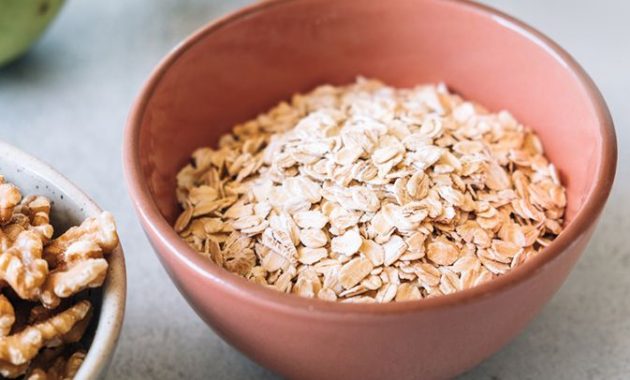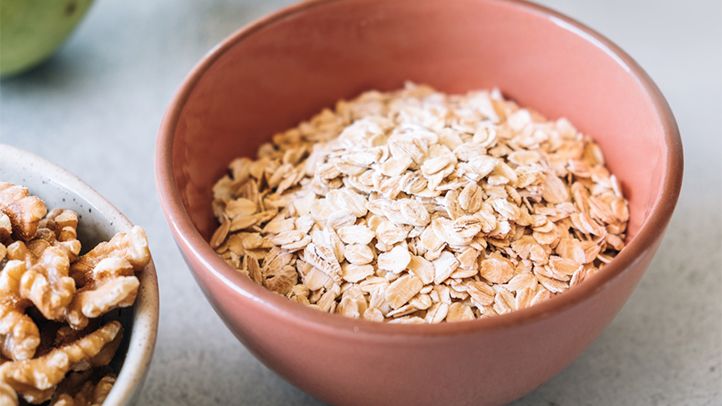
How to Cook Grains That Won’t Spike Diabetes: A Guide to Blood Sugar Control
For individuals managing diabetes, the simple act of preparing a meal can feel like navigating a minefield. The carbohydrates in grains, a staple in many diets, can significantly impact blood sugar levels. This article, geared towards those with diabetes or prediabetes, explores how to cook grains in a way that minimizes blood sugar spikes. We’ll delve into the science, offer practical cooking techniques, and provide delicious recipes to help you enjoy grains without compromising your health.
Understanding the glycemic index (GI) and glycemic load (GL) is crucial. The GI measures how quickly a food raises blood sugar levels, while the GL considers the portion size. Choosing grains with a lower GI and GL is key. This article focuses on strategies that reduce the impact of grains on blood sugar. These strategies empower individuals to make informed choices, promoting better blood sugar control and overall well-being. The goal is to integrate grains into a balanced diet without causing dramatic blood sugar fluctuations.
The Science Behind Blood Sugar and Grains
When we consume carbohydrates, our bodies break them down into glucose. This glucose enters the bloodstream, triggering the release of insulin. Insulin helps glucose move from the blood into cells for energy. For people with diabetes, this process can be disrupted. Either the body doesn’t produce enough insulin, or the cells become resistant to its effects.
Grains vary in their impact on blood sugar. Refined grains, like white rice and white bread, are quickly digested, leading to rapid blood sugar spikes. Whole grains, on the other hand, contain more fiber, which slows down digestion and the release of glucose. Fiber acts as a buffer, preventing drastic fluctuations in blood sugar. The cooking method also significantly influences how quickly a grain is digested. Understanding these principles is the first step in managing blood sugar effectively.
Choosing the Right Grains: A Matter of GI and GL
Not all grains are created equal when it comes to blood sugar. Some are inherently better choices than others. Focus on whole grains. These grains offer more nutrients and fiber. They are less likely to cause significant blood sugar spikes. Here are some excellent grain choices for those managing diabetes:
- Oats: Especially steel-cut oats, have a low GI and are rich in soluble fiber.
- Barley: Another whole grain with a low GI, barley provides sustained energy release.
- Quinoa: Technically a seed, quinoa is a complete protein and has a moderate GI.
- Brown Rice: Compared to white rice, brown rice has a lower GI and more fiber.
- Farro: This ancient grain offers a chewy texture and a moderate GI.
Avoid or limit refined grains. These include white rice, white bread, and products made with white flour. Always check food labels. Be mindful of portion sizes. Even healthy grains can raise blood sugar if consumed in excess. Pay attention to how different grains affect your body. Monitor your blood sugar levels after meals. This will help you personalize your diet.
Cooking Techniques to Minimize Blood Sugar Spikes
How you cook grains can make a big difference in their impact on blood sugar. Several techniques can help slow down digestion and glucose absorption.
- Soaking: Soaking grains, particularly oats and barley, overnight can reduce their GI. Soaking helps break down some of the starch. It makes the grains easier to digest.
- Cooking with Acid: Adding a small amount of acid, such as lemon juice or vinegar, during cooking can slow down starch digestion. It can also improve the flavor of the grains.
- Cooling: Cooling cooked grains before eating them increases their resistant starch content. Resistant starch acts like fiber. It resists digestion in the small intestine. It leads to a slower release of glucose.
- Pairing with Protein and Healthy Fats: Eating grains with protein and healthy fats can slow down the absorption of glucose. This combination promotes balanced blood sugar levels.
These cooking techniques, when combined with mindful grain choices, can significantly improve blood sugar management. Experiment with different methods to see what works best for you. Consider consulting a registered dietitian or certified diabetes educator. They can provide personalized guidance and support.
Recipe Ideas: Enjoying Grains Responsibly
Here are a few recipe ideas, focusing on grains that won’t spike diabetes, that incorporate the strategies discussed above. These recipes prioritize flavor and nutritional value. They are designed to be both delicious and blood sugar-friendly.
Steel-Cut Oatmeal with Berries and Nuts
This breakfast provides sustained energy and fiber. Steel-cut oats have a lower GI than rolled oats. Berries add antioxidants. Nuts contribute healthy fats and protein.
Ingredients:
- 1/4 cup steel-cut oats (soaked overnight)
- 1 cup water or unsweetened almond milk
- Pinch of salt
- 1/4 cup mixed berries (blueberries, raspberries, etc.)
- 1 tablespoon chopped nuts (almonds, walnuts, etc.)
Instructions:
- Rinse the soaked oats.
- Combine oats, water/milk, and salt in a saucepan.
- Bring to a boil, then reduce heat and simmer for 15-20 minutes, or until oats are tender.
- Stir in berries and nuts.
- Serve immediately.
Barley Salad with Grilled Chicken and Vegetables
This salad offers a balanced meal with protein, fiber, and healthy fats. Barley provides a chewy texture and sustained energy.
Ingredients:
- 1/2 cup barley (cooked and cooled)
- 4 oz grilled chicken breast, diced
- 1/2 cup mixed grilled vegetables (peppers, zucchini, onions)
- 1 tablespoon olive oil
- 1 tablespoon lemon juice
- Salt and pepper to taste
Instructions:
- Combine barley, chicken, and vegetables in a bowl.
- Whisk together olive oil and lemon juice.
- Pour dressing over salad and toss to combine.
- Season with salt and pepper.
- Serve chilled.
Quinoa Bowl with Roasted Vegetables and Chickpeas
This vegetarian option is packed with protein and fiber. Quinoa provides a complete protein source. Roasted vegetables add flavor and nutrients.
Ingredients:
- 1/2 cup quinoa (cooked)
- 1 cup roasted vegetables (broccoli, sweet potatoes, Brussels sprouts)
- 1/2 cup chickpeas (rinsed and drained)
- 1 tablespoon tahini
- 1 tablespoon lemon juice
- Salt and pepper to taste
Instructions:
- Combine quinoa, vegetables, and chickpeas in a bowl.
- Whisk together tahini and lemon juice.
- Drizzle dressing over the bowl and toss.
- Season with salt and pepper.
- Serve warm or cold.
These recipes offer a starting point. Adapt them to your preferences and dietary needs. Experiment with different grains, vegetables, and protein sources. The key is to create delicious and blood sugar-friendly meals. Always monitor your blood sugar levels. See how different meals affect you. This will help you make informed choices.
Beyond the Plate: Lifestyle Factors for Blood Sugar Control
While cooking grains properly is important, it’s just one piece of the puzzle. Several other lifestyle factors play a crucial role in blood sugar management.
- Regular Exercise: Physical activity increases insulin sensitivity. It helps your body use glucose more effectively. Aim for at least 150 minutes of moderate-intensity exercise per week.
- Stress Management: Chronic stress can raise blood sugar levels. Practice stress-reducing techniques like yoga, meditation, or deep breathing.
- Adequate Sleep: Lack of sleep can negatively impact blood sugar control. Aim for 7-8 hours of quality sleep per night.
- Hydration: Drinking plenty of water helps your kidneys flush out excess glucose. It also supports overall health.
By addressing these lifestyle factors, you can further enhance your blood sugar control. Consult with your healthcare provider. They can help you develop a comprehensive plan. This plan should include diet, exercise, and other lifestyle modifications.
Conclusion: Embracing Grains with Confidence
Managing diabetes doesn’t mean you have to eliminate grains entirely. By choosing the right grains, using appropriate cooking techniques, and incorporating them into a balanced meal plan, you can enjoy them safely. This article has provided a comprehensive guide on how to cook grains that won’t spike diabetes. Remember to prioritize whole grains. Experiment with cooking methods. Pair grains with protein and healthy fats. Always monitor your blood sugar levels. Make informed choices based on your individual needs. With careful planning and attention, grains can be a part of a healthy and enjoyable diet for those with diabetes. The key is knowledge, preparation, and consistent monitoring. This approach empowers individuals to take control of their health. It allows them to live fulfilling lives while managing their condition effectively.
[See also: Related Article Titles]

